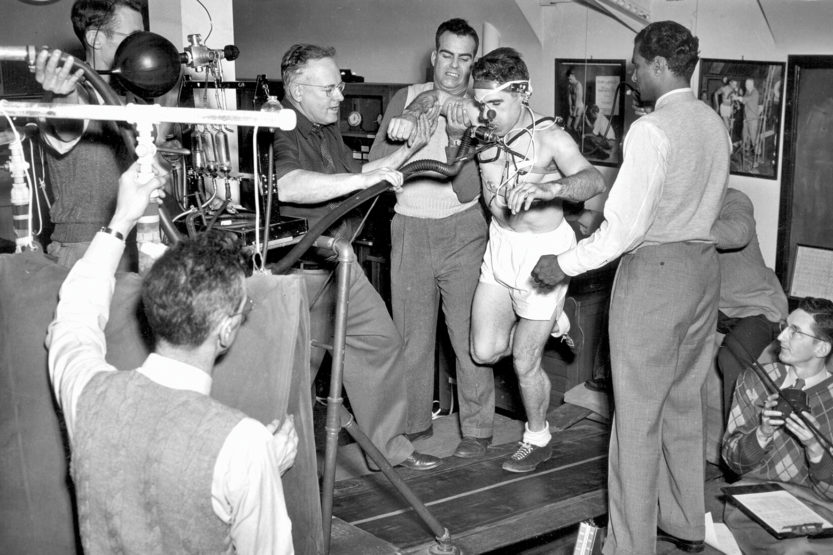Ingenious: Cureton’s cure
 Known as the father of physical fitness, Cureton conducted studies to determine how exercise affects the body’s endurance and capability. (Image courtesy of UI Archives)
Known as the father of physical fitness, Cureton conducted studies to determine how exercise affects the body’s endurance and capability. (Image courtesy of UI Archives) Thomas Cureton generated plenty of headlines in the 1950s when he boldly declared that, for many people, middle age begins prematurely at age 26. Without regular exercise, he argued, the body begins to deteriorate in the 20s, and by age 40, such people become “lively fossils.”
The UI professor of physical education said that human deterioration can be slowed through a disciplined regimen of walking, running and swimming. Today remembered as “the father of physical fitness,” he was one of the first authorities in the 20th century to advocate regular exercise, and has even been credited with helping inspire Americans to take up jogging, a trend that began in the 1960s.
In his heyday, Cureton enjoyed a robust media presence, appearing on television and in the pages of such magazines as Time, Popular Mechanics and Sports Illustrated.
Cureton joined the UI faculty in 1941 and established the Physical Fitness Research Laboratory at the University in 1944—one of the earliest and most influential labs of its kind. What set the professor apart from more run-of-the-mill exercise gurus was his large body of research, which established the health benefits of exercise, particularly for the heart.
He crisscrossed the globe, holding Cureton Clinics in 26 nations and offering assessments such as his “18-Item Fitness Test,” which rated participants on balance, flexibility, agility, strength, power and endurance. He even ran tests on Olympic athletes, including legendary runner Jesse Owens.
A champion swimmer, Cureton practiced what he preached. He once said he hoped to still be jogging at age 97 (and almost reached that goal, passing away in 1992 at the age of 91).
Sources: Research Quarterly for Exercise and Sport, Vol. 67, No. 1, 1996; The New York Times, Dec. 24, 1992; Pageant, March 1955; and the University of Illinois Archives.

